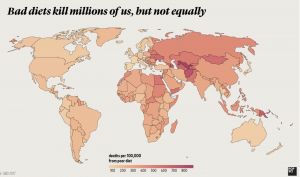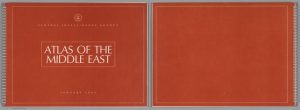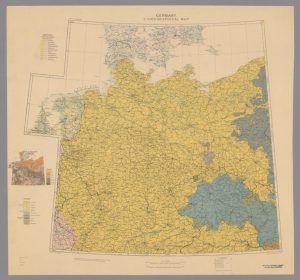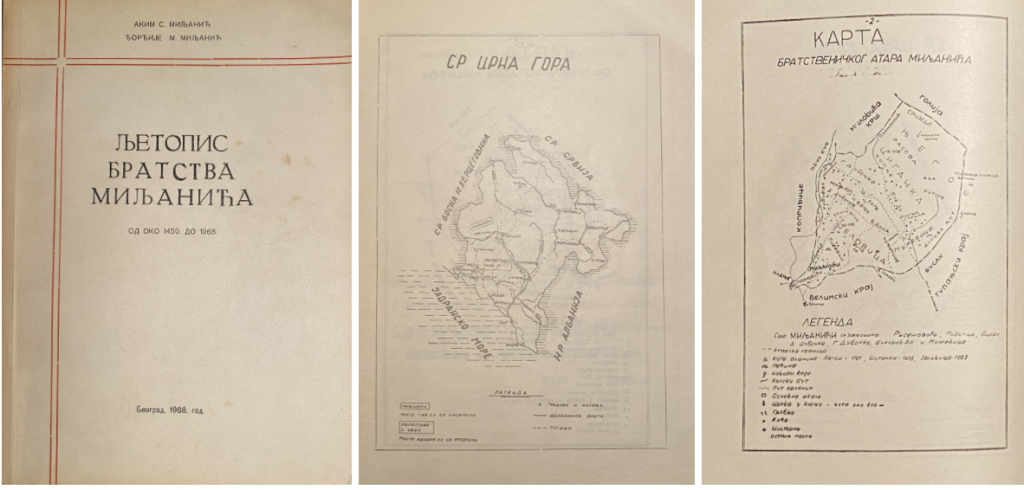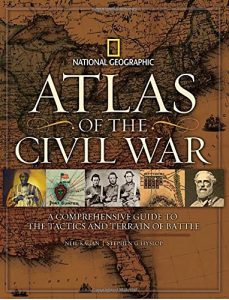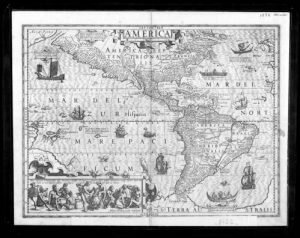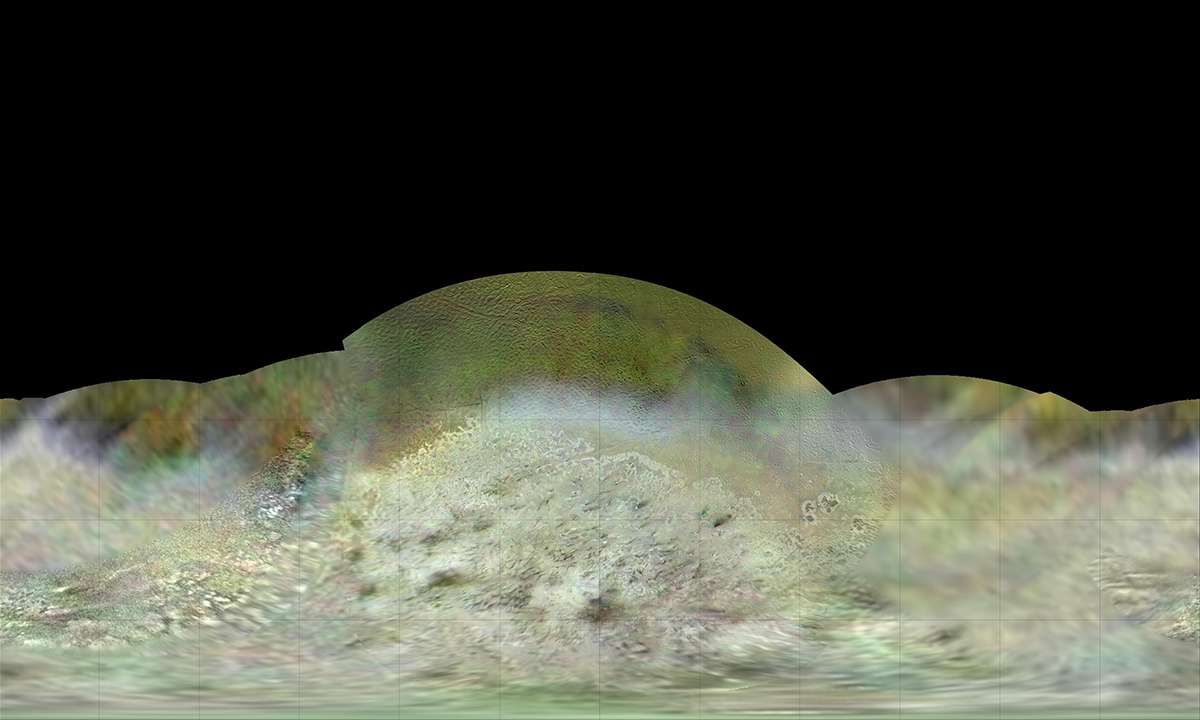 Living in America for my entire life has resulted in me having a bit of an American-centric view of life and maps. I have never had trouble finding America on the map, since it is a vast continent that takes up a considerable portion of maps. In the Wealth Year 1500 map, America is almost nonexistent, which is a drastic change from how America is usually depicted. While the North American continent itself may not have changed in shape in reality, the Wealth Year 1500 Map enables observers to visualize and understand political, social, and economic concepts concerning the world in 1500. While the GDP concept may not have existed in 1500, the Wealth Year 1500 map turns the proportion of worldwide Gross Domestic Product, or GDP, in USD in purchasing power parity produced in each continent in 1500 into something that people can visualize. The Wealth Year 1500 map is a cartogram: a thematic map that alters geographic size to emphasize an argument. In the Wealth Year 1500 map, the cartogram enables observers to explore the scale of wealth located in each continent in turning points in history. The continents’ geographical shapes aren’t necessary to the map since the focus is on the continents’ size and distortions rather than the detailed aspects of topography and borders. There is too much data to be processed with too many symbols, which can confuse observers, as Denis Wood claims in his book Rethinking the Power of Maps. While the numerical data may not be evident in the map, distortion displays the concepts that the mapmakers are attempting to convey. Visualizing the wealth located in each country lets observers create a sense of understanding about where power and money were focused in reference to the rest of the world, which lends a hand to understanding history.
Living in America for my entire life has resulted in me having a bit of an American-centric view of life and maps. I have never had trouble finding America on the map, since it is a vast continent that takes up a considerable portion of maps. In the Wealth Year 1500 map, America is almost nonexistent, which is a drastic change from how America is usually depicted. While the North American continent itself may not have changed in shape in reality, the Wealth Year 1500 Map enables observers to visualize and understand political, social, and economic concepts concerning the world in 1500. While the GDP concept may not have existed in 1500, the Wealth Year 1500 map turns the proportion of worldwide Gross Domestic Product, or GDP, in USD in purchasing power parity produced in each continent in 1500 into something that people can visualize. The Wealth Year 1500 map is a cartogram: a thematic map that alters geographic size to emphasize an argument. In the Wealth Year 1500 map, the cartogram enables observers to explore the scale of wealth located in each continent in turning points in history. The continents’ geographical shapes aren’t necessary to the map since the focus is on the continents’ size and distortions rather than the detailed aspects of topography and borders. There is too much data to be processed with too many symbols, which can confuse observers, as Denis Wood claims in his book Rethinking the Power of Maps. While the numerical data may not be evident in the map, distortion displays the concepts that the mapmakers are attempting to convey. Visualizing the wealth located in each country lets observers create a sense of understanding about where power and money were focused in reference to the rest of the world, which lends a hand to understanding history.
When observers first look upon the Wealth Year 1500 map, the European countries’ sheer size is quite shocking. Many economically important events, such as the industrial revolution or imperialism, hadn’t occurred yet. In addition, wealth in 1500 was defined quite differently compared to how wealth is defined currently. European countries’ size evidently conveys that the most wealth, or gross domestic product per person, was concentrated in these countries. France alone is larger than North America, which is a vast continent. However, Europe as a region isn’t necessarily the largest. Southern and Eastern Asia are the largest regions that have the largest GDPs in 1500. It is important to note that Southern and Eastern Asia were the most populous regions at the time, which makes Europe’s size in comparison quite impressive. The 1500s mark the point in history where Europe sees extreme exponential growth, while Eastern and Southern Asia grow at a reasonably steady rate. Due to the extreme economic exponential growth, due to colonialism and the Industrial revolution later in history, Europe surpasses Asia on an economic scale. The Wealth Year 1500 map affirms the beginning of the economic shift between the two regions, making the map a proposition, and shows observers the genuine comparison between the two using physical size.
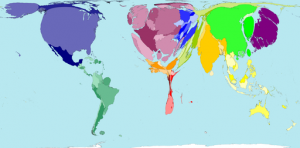 To further explore the Wealth Year 1500 map’s significance, the Wealth Year 2002 map lets observers compare the drastic difference between the two time periods wealth distribution. As Wood states, “Time is always present in the map because it is inseparable from space,” and because of it, observers can dive deeper into history. In the Wealth Year 2002 map, the wealth, or GDP, is focused in the United States, which is comparable in size to the entirety of Europe or Asia. Compared to the Wealth year 1500 map, where North America was nonexistent, the 2002 map allows observers to understand the exponential economic growth of the United States truly. Over 500 years, wealth distribution had been altered so drastically. In 2002, Africa resembled North America in the 1500 map, which conveys the continent’s sizable economic decay. The map may not explore the reasons for the changes, but the map is a resource that creates a visual representation of the change that historians and political scientists can use. Yet, the simplification of data in both maps can be somewhat harmful as well. The map doesn’t account for specific inequalities between the continents, such as corruption or a lack of natural resources. Also, the 1500 Year map doesn’t account for the differences in how wealth was valued or measured since GDP wasn’t a universal way of measuring wealth yet, which could create inaccuracies in the map. However, the comparison of the maps does allude to the historical events that took place in the 500 years.
To further explore the Wealth Year 1500 map’s significance, the Wealth Year 2002 map lets observers compare the drastic difference between the two time periods wealth distribution. As Wood states, “Time is always present in the map because it is inseparable from space,” and because of it, observers can dive deeper into history. In the Wealth Year 2002 map, the wealth, or GDP, is focused in the United States, which is comparable in size to the entirety of Europe or Asia. Compared to the Wealth year 1500 map, where North America was nonexistent, the 2002 map allows observers to understand the exponential economic growth of the United States truly. Over 500 years, wealth distribution had been altered so drastically. In 2002, Africa resembled North America in the 1500 map, which conveys the continent’s sizable economic decay. The map may not explore the reasons for the changes, but the map is a resource that creates a visual representation of the change that historians and political scientists can use. Yet, the simplification of data in both maps can be somewhat harmful as well. The map doesn’t account for specific inequalities between the continents, such as corruption or a lack of natural resources. Also, the 1500 Year map doesn’t account for the differences in how wealth was valued or measured since GDP wasn’t a universal way of measuring wealth yet, which could create inaccuracies in the map. However, the comparison of the maps does allude to the historical events that took place in the 500 years.
In a way, these maps are not only economic maps but also indirect political maps. Economics and politics are incredibly intertwined, and that is a transparent fact when looking at these two maps. As Andrew Jackson said, “Money is power.” North America in 1500 had extremely low GDP while also having no power or relations with the international world. Now, the North American continent accommodates the most influential superpower globally, the United States, which has the largest GDP. Texts can state the dramatic change of GDP on each continent, yet, a visual representation of this change makes the argument much more evident.
The Wealth Year 1500 map, accompanied by the Wealth Year 2002 map, creates a visual representation of wealth distribution using GDP data and provides essential context to observers when looking at history. These two maps can be used for various reasons and can be interpreted separately. Scholars can apply the maps to several different subjects, such as politics, economics, history, and social analysis. Yet, these maps are explicitly propositions, as they are statements that affirm or even deny the existence of wealth levels in each region in a particular year. Not only are the cartograms easy to understand, but they can imply data not directly presented by using symbols, distortions, and color. Different colors are used for each continent, and some countries are shaded in much darker to confirm where more wealth was concentrated. The more vibrant colors in countries are considered to have more wealth, which can be assumed universally by most observers. For those reasons, the Wealth Year maps deserve the title of “Map of the Week.”
Works Cited
“Wealth Year 1500.” Worldmapper, Worldmapper, 25 Mar. 2020, worldmapper.org/maps/wealth-1500/.
“Wealth Year 2002.” Worldmapper Archive: The World as You’ve Never Seen It Before, Worldmapper, archive.worldmapper.org/display.php?selected=170.
Wood, Denis. Rethinking the Power of Maps. Guilford Press, 2010.


